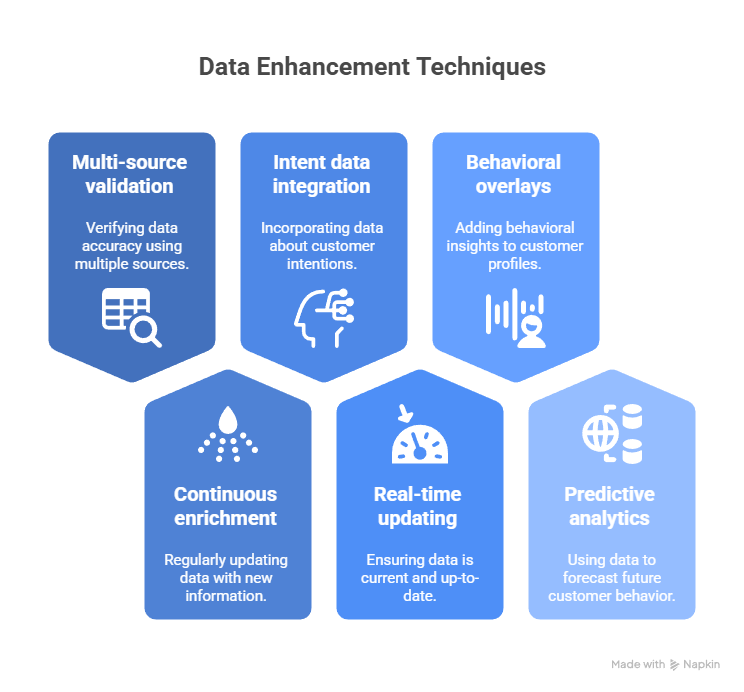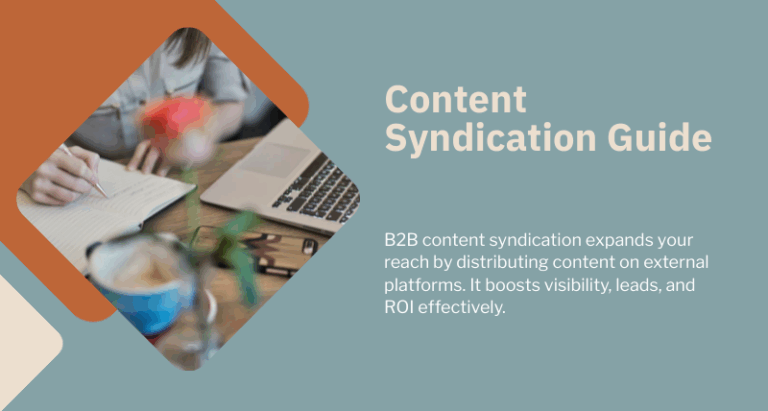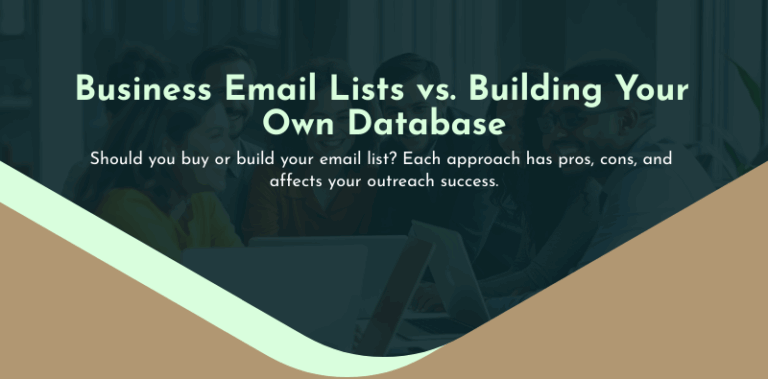In a recent discussion about the future of work, entrepreneur and investor Mark Cuban issued a powerful warning: the next era of disruption will not revolve around automation alone, but the “automation of automation.” In other words, not only will tasks be automated—the processes that build, optimize, and manage automations will also begin to automate themselves.
This shift has sweeping implications for how organizations operate, innovate, and compete. But for B2B marketing, especially disciplines dependent on speed, precision, and real-time data—such as lead generation and email marketing—Cuban’s insight carries an especially urgent meaning.
As automation becomes self-improving, marketers still relying on manual workflows risk becoming severely outpaced. To remain competitive, B2B organizations will need to embrace a new marketing architecture—one that uses AI, data intelligence, and advanced automation systems to run faster, smarter, and more autonomously than ever before.
This article breaks down what Cuban’s warning means in practical terms and explores how companies can position themselves on the right side of this technological shift. It also outlines how Reach Marketing, a leader in data-driven B2B marketing solutions, can help organizations modernize their marketing operations during this pivotal transition.
Understanding Mark Cuban’s Warning: The Next Phase of Intelligent Automation
For decades, conversations about automation focused on task replacement. Software automated manual tasks. AI automated decision-making. Platforms automated campaign workflows.
Cuban’s “automation of automation” reflects the next layer:
systems that automate the management, refinement, and orchestration of other automated systems.
In this environment:
- Campaigns optimize themselves.
- Segmentation adapts based on real-time behavioral shifts.
- Predictive models refine themselves without constant human tuning.
- Workflows branch and evolve autonomously.
- Data pipelines shape themselves as new buyer signals appear.
Put simply, manual oversight becomes too slow to keep up. The competitive edge will belong to organizations that leverage automation systems that self-learn, self-correct, and self-direct.
For B2B marketing, especially high-volume outreach environments, this shift is profound.
Why This Matters for B2B Lead Generation
B2B lead generation is already undergoing rapid transformation. Previously, marketers built lists manually, segmented based on static criteria, and deployed campaigns with limited real-time intelligence. Even today, many organizations still:
- Build prospect lists manually
- Trigger campaigns using simple if-then rules
- Score leads based on rigid frameworks
- Rely on scheduled outreach rather than real-time adaptive nurturing
- Manage multi-channel campaigns manually across platforms
This approach is becoming increasingly ineffective. Cuban’s warning accelerates the reality:
manual B2B lead-gen frameworks will be the first to get left behind.

The Shift Toward Autonomous Lead Generation
In the era of “automation of automation,” B2B lead-gen will be powered by:
- AI-enriched data feeds that update continuously
- Predictive intent scoring that evolves automatically
- Behavioral intelligence networks that detect buying signals in real time
- Adaptive content delivery systems that adjust messaging dynamically
- Automated cross-channel orchestration that responds to actions instantly
The goal is not to run campaigns faster—it’s to run intelligent acquisition engines that operate beyond the limitations of human-managed workflows.
Organizations that fail to adopt these systems will:
- Capture fewer leads
- Lose high-intent buyers
- Waste budget on outdated tactics
- Struggle to personalize at scale
- Fall behind competitors with modern data automation infrastructures
The Impact on Email Marketing: From Manual Scheduling to Autonomous Lifecycle Management
Email marketing has always been a data-driven discipline, but traditionally, marketers built workflows manually:
- User joins a list → receive sequence
- Lead visits a page → trigger campaign
- Prospect unsubscribes → remove from segment
Yet, as buyer behavior becomes nonlinear and multi-channel, static email workflows cannot keep pace.
Cuban’s “automation of automation” preview aligns with the next evolution:
Autonomous lifecycle management.
This is where:
- Segments continuously self-reorganize
- Email cadence adjusts itself based on open/engagement signals
- Messaging turns dynamic for each individual recipient
- Multi-channel touchpoints (email, SMS, display, LinkedIn, programmatic) coordinate themselves
- AI selects the optimal message variant and send-time without human intervention
Manual email strategies risk becoming obsolete because they cannot respond in real time to shifting buyer behavior.
Self-Driving Email Programs Are Becoming the New Standard
Advanced email automation platforms already leverage:
- Predictive send-time optimization
- Adaptive frequency management
- Real-time intent monitoring
- AI-powered subject-line generation
- Machine-learning engagement scoring
- Dynamic content blocks personalized to each user
But Cuban’s warning implies something deeper:
email automations will soon design, test, and optimize other email automations.
Marketers will increasingly become architects—designing strategy and oversight—while automation systems run the day-to-day orchestration of campaigns.
The Risk of Falling Behind: What Happens If B2B Marketers Ignore This Shift
Organizations that continue relying on manual-heavy marketing processes face four major risks:
1. Slower Speed to Market
Competitors with multi-layered automation launch campaigns in minutes.
Manual teams take weeks.
2. Poor Lead Quality
Without AI-driven enrichment and self-optimizing scoring, it becomes impossible to interpret buyer signals accurately.
3. Inefficient Budget Allocation
Campaigns that don’t update in real time waste money on unqualified or cold leads.
4. Limited Personalization
Manual segmentation cannot support individual-level personalization across large B2B databases.
Cuban’s warning is not prediction—it’s analysis. The future is already unfolding. Organizations that hesitate risk rapid loss of market relevance.
How Reach Marketing Helps Organizations Adopt “Automation of Automation” Frameworks
With decades of expertise across data intelligence, marketing automation, omni-channel campaign execution, and advanced B2B email marketing, Reach Marketing is uniquely positioned to help organizations navigate this shift successfully.
Here’s how Reach Marketing bridges the gap between where companies are today and where automation is heading.
1. Deep Data Enrichment & Real-Time Database Intelligence
Reach Marketing enhances raw customer and prospect data through:
- Multi-source validation
- Continuous enrichment
- Intent data integration
- Real-time updating
- Behavioral overlays
- Predictive analytics
This provides the foundation for intelligent, self-optimizing automation frameworks.
Better data → better automations → better outcomes.

2. Multi-Layered Marketing Automation Architecture
Unlike agencies that simply “build workflows,” Reach Marketing develops automation ecosystems that:
- Learn from engagement signals
- Adapt quickly based on performance
- Expand automatically as new data points appear
- Integrate across email, programmatic, social, display, and CRM systems
- Use machine learning to determine the next best action
This is the infrastructure required for “automation of automation.”
3. Omnichannel Campaign Orchestration at Scale
Reach Marketing manages high-volume, multi-touch B2B campaigns that operate continuously across:
- Display
- Social
- Programmatic
- Direct mail
- Content syndication
- Data-driven audience building
These campaigns are not static—they evolve based on interaction data, creating a closed-loop optimization cycle.
4. Self-Optimizing Email Programs
Email continues to be a primary B2B lead driver, but only when powered by dynamic automation. Reach Marketing deploys:
- Adaptive journey mapping
- Predictive send-time optimization
- AI-generated personalization
- Behavioral retargeting
- Intent-driven nurture streams
- Continuous A/B and multivariate testing automatically executed
This aligns precisely with Cuban’s automation trajectory.
5. First-Party Data + AI = A Modern Revenue Engine
Organizations that build automation on poor data will automate inefficiency.
Reach Marketing solves this by integrating:
- AI-driven scoring
- Behavioral analysis
- Real-time triggers
- First-party data enrichment
- Identity resolution
This results in a marketing system that becomes smarter every day.
Why Organizations Should Act Now
Cuban’s warning is not theoretical—organizations across industries are already moving toward systems that automate other systems.
The companies fastest to adopt automation-of-automation frameworks will enjoy:
- Higher-quality leads
- Faster conversion cycles
- Stronger competitive positioning
- Lower operational costs
- Better personalization experiences
- Greater marketing agility
- Scalable, self-improving campaigns
The companies slowest to adopt will struggle to keep up with market leaders operating at an exponential speed advantage.
Conclusion: The Future of B2B Marketing Is Autonomous
Mark Cuban’s insight reflects a broader truth emerging across every major marketing channel:
The future belongs to organizations that can build marketing systems which adapt, refine, and optimize themselves.
For B2B lead generation and email marketing, this marks a profound shift away from manual workflows and toward intelligent, autonomous marketing engines.
Reach Marketing stands at the forefront of this transformation, helping organizations modernize their data, automate their acquisition systems, and build multi-layered autonomous frameworks capable of thriving in this new era.
In a world where automation automates itself, companies must decide whether they will shape the next era of B2B marketing—or be shaped by it.



